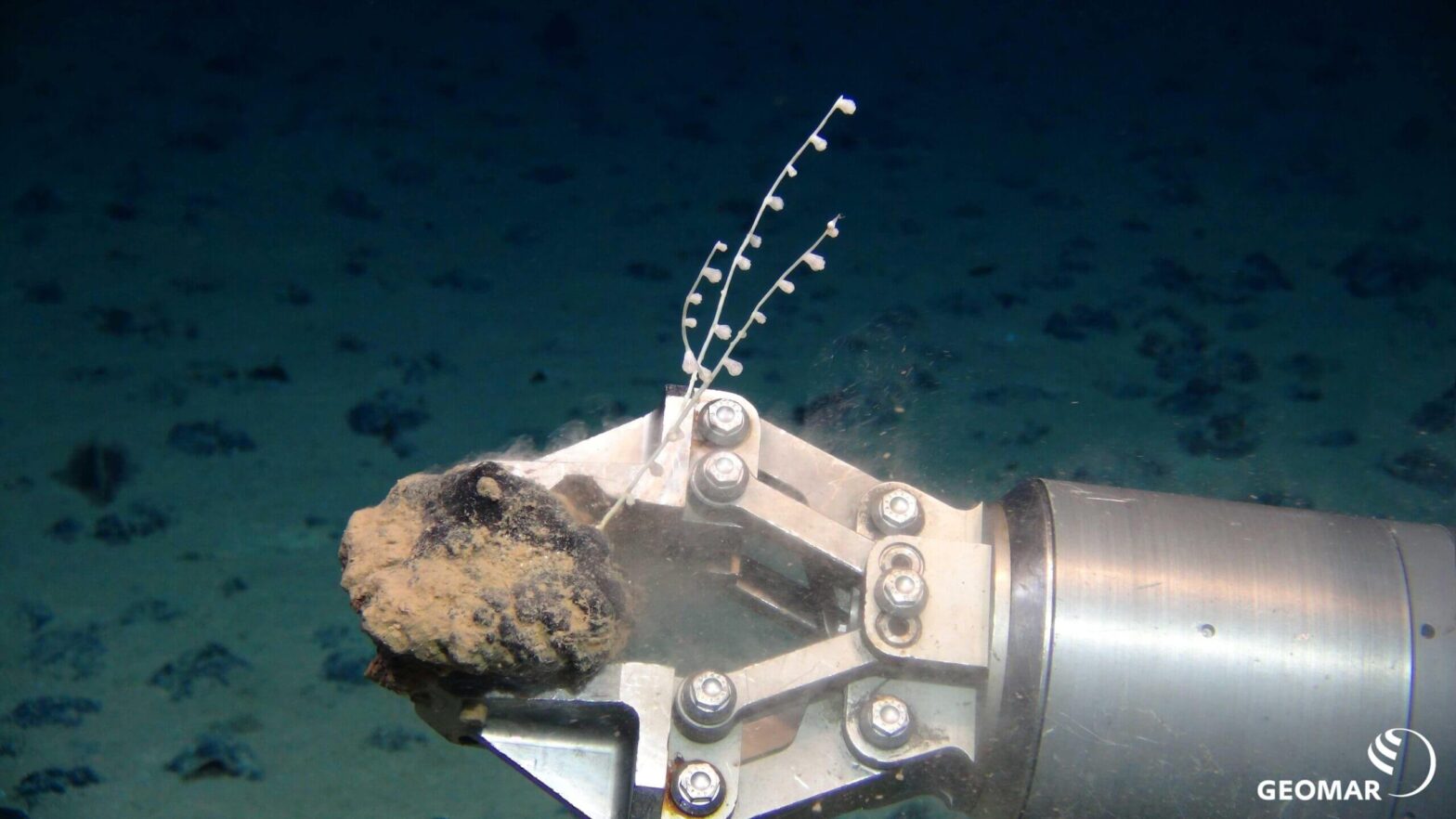Deep-sea mining: Fatal consequences for marine life
Fragile deep-sea habitats are already under severe threat due to global warming, plastic waste and bottom trawling. Deep-sea mining poses further threats to the oceans.
The need for renewable energy and the ongoing development of new high-tech products are driving demand for minerals such as manganese alloys, cobalt, nickel, copper, zinc and rare minerals. It is now planned to extract these raw minerals from the oceans. They are commonly found at depths of 800 to 6,500 metres in polymetallic nodules, polymetallic sulphides and cobalt crusts. Contrary to what their names suggest, these three deposits contain a whole range of minerals
Polymetallic nodules lie loosely in the sediment of the seabed, whereas polymetallic sulphides and cobalt crusts are firmly connected to the subsoil. The extraction of these raw materials in the deep sea is extremely complex due to their location or the extreme pressure. The development of technologies for the extraction of polymetallic nodules and polymetallic sulphides is, in some cases, far advanced. However, the extraction of these minerals has not yet been approved by the International Seabed Authority (ISA).
Enormous destructive potential
Where minerals exist in a concentrated form, valuable habitats have formed over millions of years. Mining would destroy these habitats and their inhabitants in a very short time – and on an enormous scale: the costly mining of raw materials on the seabed is only profitable if huge areas are involved. In the case of polymetallic nodules, each mining licence can cover an area almost twice the size of Switzerland.
Machines churn up sediments on the seabed, which are scattered over wide areas by the water currents and disturb the animals during feeding and when breathing. The breakdown of minerals may also release toxins.
Noise also poses a problem. In the murky depths of the oceans, the survival of animals depends largely on acoustics. Mining generates vibrations in the sea from the surface down to the seabed. Ships and platforms float above, from which riser systems with pumps extend down to the machines on the seabed. Along the entire water column therefore, marine animals suffer from noise emissions.
Minerals that have been extracted are pumped to the ocean`s surface and separated from the sediment, which in turn is released back into the sea. Thus, clouds of sediment also form at the higher water depths, polluting the water and reducing the already sparse light available.
Light pollution, on the other hand, is generated by both vessels at the surface and the machines on the seabed. This disturbs animals on the surface (e.g. seabirds) as well as animals that are accustomed to darkness in the depths deep and use light for communication, hunting or deception. The consequences would also be incalculable if mining were to transport foreign organisms such as bacteria into the ocean’s new habitats.
Irreversible damage
Wherever deep-sea mining will be allowed in the future, the ocean may be exposed to these environmental disturbances around the clock for years or even several decades.
This type of resource exploitation has the potential to cause enormous and irreparable damage to the ocean´s ecosystem. Some of the deep-sea inhabitants live extremely long lives – one species of sponge is said to live up to 11,000 years – and reproduce extremely slowly. If animal populations are harmed and their habitats permanently disturbed, it will be almost impossible for them to recover.
It is therefore important to put deep-sea mining plans on hold. OceanCare and the Deep Sea Conservation Coalition are calling for a moratorium. Before raw materials are extracted from the seabed, it must be guaranteed that marine life is effectively protected from harm. Furthermore, the need for raw materials from the sea must be thoroughly analysed because it is becoming apparent that, thanks to technological innovation, fewer minerals will soon be needed, e.g. in e-mobility.
Additional information
IUCN – Deep-sea mining consequences for the marine environment
